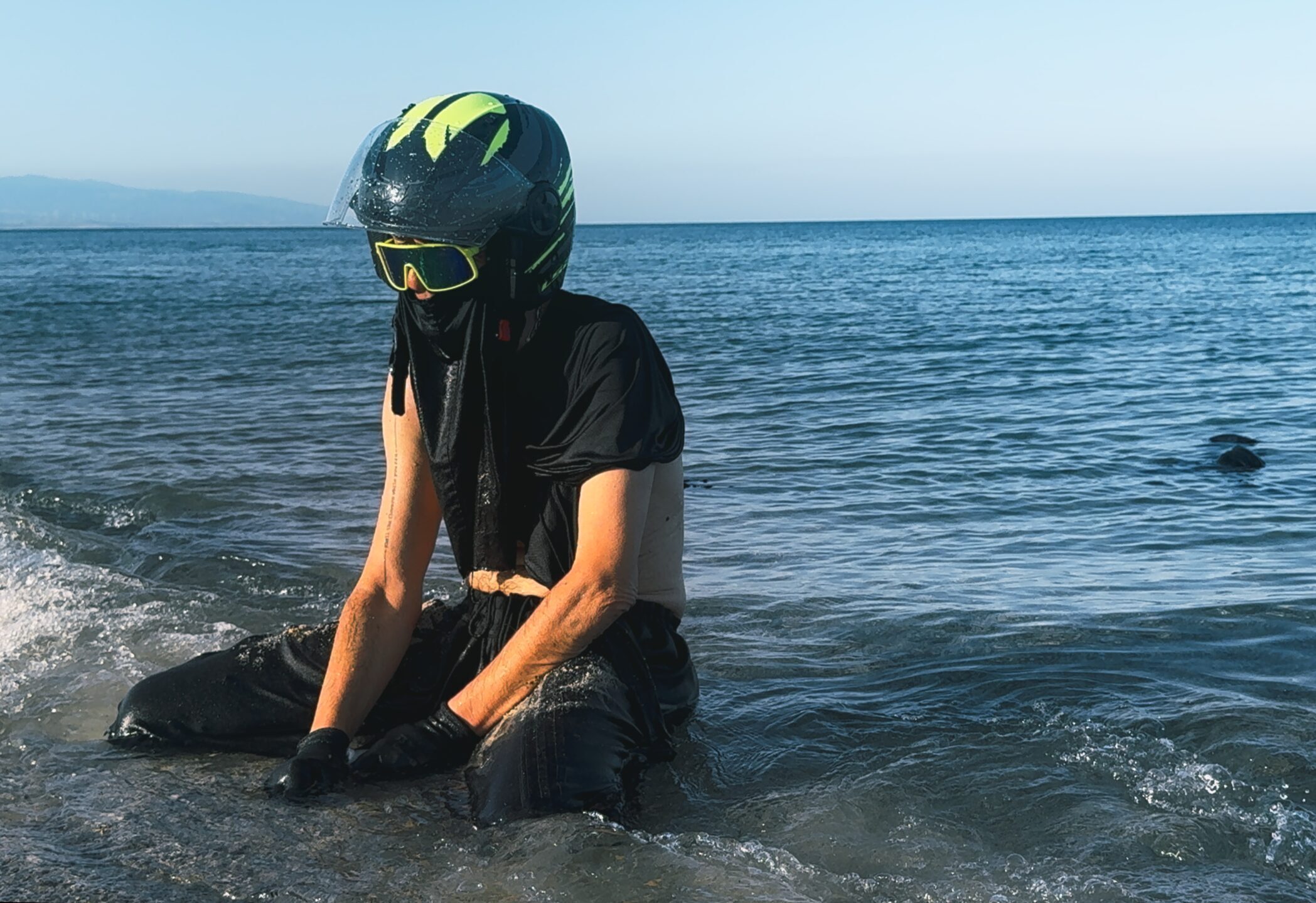
Vladimir Bertozzi
A Performed Film
All was quiet and joyful, all but me;
I, like Lucifer, bore hell within me;
and since I loved nothing, I longed to tear up trees,
to spread havoc and destruction around me,
and then sit and revel in the ruin.(Frankenstein, Mary Shelley)
With the final movement of the Frankenstein project, Motus expands the “map of horror” conceived by the monstrous mind of a very young Mary Shelley, shifting the focus to the moment the creature begins to perceive itself as irrevocably excluded from the apparent bliss of humankind, who reject it solely because of its non-conforming appearance.
This final act explores that terrible click—the instant love turns into HATE, benevolence into violence. [ÒDIO] is also the title of the new film/documentary by Daniela Nicolò and Enrico Casagrande, winner of the ITALIAN COUNCIL 2024, to premiere in March 2026 at MAMbo – Museum of Modern Art of Bologna. It is a wide-ranging investigation into the theme of revenge, and violence both suffered and inflicted, built on interviews with young people from diverse ethnic and social backgrounds. Their voices feed the dramaturgical core of this second movement.
We felt it was essential to address this generation, because in a way, the creature (who has no age) undergoes a “coming-of-age” process in complete isolation—until the moment it discovers “the father figure” (who assembled it), through the discovery of his journal…
Feeling rejected, it begins to develop a series of attitudes of retaliation typical of adolescence—directed toward the absent family institution and society at large.
The creature quickly shifts from a tender (and obsessive) love for Dr. Frankenstein to an unquenchable hatred. Perceiving its own monstrosity and inadequacy, it becomes lost in a universe of conflicting emotions, often losing control. Something akin to the emotional chaos that affects many adolescents today, especially those from economically and socially disadvantaged backgrounds. Incidents of violence and bullying among young people are skyrocketing—at an intensity never seen before.
As is often the case in our work, we want to investigate and try to understand why.
In this second movement, the voice of the creature is intertwined with other voices and solitudes—testimonies, “confessions” of young people we met in different settings: schools, rehabilitation centers, grassroots gyms, community spaces in major cities and in the deep south of Italy. These will be embodied by a new and mysterious being/performer who will inhabit the stage.
The film, which forms the spine of the entire performance—and will be shot mainly among Calabria’s unfinished architectural “eco-monsters”—centers on a long dialogue between Enrico Casagrande and Silvia Calderoni about artistic creation and the theme of revenge. This is abruptly disrupted by an explosion of flames: the Promethean fire from which a multitude of images and testimonies—collected through the research—will emerge, specifically edited for the performance.
A journey through the darkness of our times—necessary and ruthless—that, like all descents into the underworld, will bring us—and those who have followed us—back to see the stars!
Hate is seen as connected to love. Or, more precisely, love is understood as the precondition for hate.
Gordon Allport, in his classic account The Nature of Prejudice, argues that “symbiosis and a loving relationship always precede hate. Indeed, there can be no hate until frustration and disappointment have been centered there for a long time.”(The Organisation of Hate, Sara Ahmed)

